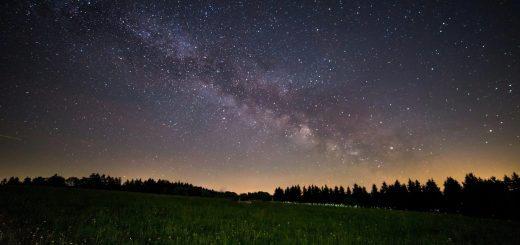The Myth and Mystery of Forest Spirits

Before diving in, please note: This post is for informational purposes only. If you’d like to know more about how we approach topics, feel free to check out our friendly Disclaimer Page.
Hey there, amazing readers! 🖐️ Just a quick note: yes, we know there are a lot of ads here. Trust us, we get it—it’s not the prettiest look, but they help us keep this blog alive and kicking. Those pesky little ads cover the costs of all the behind-the-scenes magic, from hosting and tech stuff to creating content we hope you’ll love.
We’re committed to delivering quality posts, and your support (even just sticking around despite the ads) means everything to us. So, bear with us, and thanks for helping us keep the good vibes rolling. Now, on to the fun stuff! 😉
TRANSLATE BUTTON AT THE END OF THE ARTICLE
A Quick Overview
Have you ever wandered into a forest and felt an unusual presence?
Perhaps it was the whisper of the wind rustling through the leaves, or maybe it was the sense that you were not alone.
The world of forest spirits is filled with enchantment and mystery, often blurring the lines between myth and reality.
These entities, revered in various cultures, capture our imagination and invite us to explore the deeper connections we have with nature.
So, let’s embark on a journey to discover these elusive spirits that inhabit the woods.
The Enchanting World of Forest Spirits Explained
Forest spirits are considered guardians of the woods, embodying the very essence of nature.
They are often depicted as ethereal beings that can take many forms, ranging from animals and plants to mystical creatures.
Their presence is believed to influence the growth of trees, the flow of rivers, and even the behavior of wildlife.
Many people think of them as protectors, ensuring the balance of the ecosystem.
Imagine walking through a lush forest.
Sunlight filters through the leaves, casting dappled shadows on the ground.
Suddenly, you catch a glimpse of movement, a flicker at the corner of your eye.
Could that be a forest spirit?
Some cultures believe that these spirits can communicate with us if we are attuned to their realm.
They may inspire feelings of peace, serenity, or even playfulness.
The beauty of forest spirits lies in their multifaceted nature.
They can be mischievous tricksters, like the Japanese Kodama, or benevolent protectors, such as the Celtic Dryads.
Their personalities and stories vary, but they all share a common thread: a deep connection to the natural world.
These spirits are not just ancient tales; they remind us of our responsibility to care for our environment.
While some people may dismiss forest spirits as mere folklore, many cultures continue to incorporate them into their spiritual practices.
Whether through rituals, offerings, or simple reverence, these spirits hold a significant place in the hearts of those who believe in them.
So, what is it about these mystical beings that captivates us so deeply?
Unveiling the Origins of Forest Spirit Legends
The origins of forest spirit legends can be traced back to ancient civilizations.
Many cultures revered nature as sacred, and spirits were believed to inhabit every tree, river, and stone.
The animistic beliefs of indigenous peoples around the globe emphasize this connection.
For them, every element of nature possesses a spirit, imbued with personality and purpose.
In Europe, Celtic mythology is rich with references to forest spirits, often depicted as fairy folk or nature deities.
The Druids, in particular, held trees in high esteem, believing they were portals to the spiritual realm.
It’s said that standing under a sacred oak could grant one divine wisdom.
In Japan, the Shinto tradition respects the Kami, nature spirits that inhabit everything from mountains to forests.
The Kodama, specifically associated with trees, are believed to protect their woodland homes.
Cutting down a tree inhabited by a Kodama is thought to bring misfortune.
This belief highlights the respect for nature that permeates Japanese culture.
Africa has its own unique interpretations of forest spirits, often embodied in the form of ancestral spirits that guide and protect communities.
These spirits are integral to rituals that honor the land and seek blessings.
Their connection to the forest is both literal and symbolic, representing the link between the living and the ancestors.
Examining these origins helps us understand how forest spirits evolved over time.
They adapted to cultural shifts, yet their core essence remained intact.
This adaptability is likely why they continue to thrive in modern contexts.
How Different Cultures Interpret Forest Spirits
Cultural interpretations of forest spirits are as diverse as the landscapes they inhabit.
In many Native American tribes, for example, the forest spirit is often linked to the concept of the Great Spirit, a universal force that connects all living things.
Stories told around campfires speak of animal spirits guiding the tribe, teaching lessons about respect, gratitude, and harmony with nature.
In Norse mythology, the Wood Nymphs, or "Skogsrå," are known to entice travelers with their beauty.
However, cross them, and you might find yourself lost in the woods, never to return.
This duality of attraction and danger is a common theme in many cultures.
It serves as a reminder that while nature is beautiful, it can also be unpredictable.
In Hinduism, the term "Vanadevata" refers to forest deities protecting the flora and fauna.
These spirits are revered in rituals, emphasizing the importance of biodiversity.
Hindu texts celebrate the sacredness of plants and trees, illustrating a deep respect for nature.
Across the globe, the interpretations of forest spirits also reflect societal values.
For instance, in cultures that prioritize environmental stewardship, forest spirits are portrayed as protectors.
In contrast, societies driven by industrial growth may present them as obstacles to progress, leading to narratives that downplay their significance.
Ultimately, the way we see forest spirits is intertwined with our cultural beliefs.
These interpretations provide insight into how we relate to nature and our shared environment.
The Role of Forest Spirits in Folktales and Myths
Forest spirits play pivotal roles in folktales and myths around the world.
They often serve as guides, teaching characters valuable lessons about respect, humility, and courage.
Through these stories, we connect with the natural world and understand our place within it.
In Russian folklore, the Leshy is a forest spirit who protects animals and trees.
He can change his size and appearance and often leads travelers astray.
Tales of the Leshy remind us to respect the wilderness and not to take it for granted.
They highlight the importance of understanding and honoring nature’s boundaries.
In the Brothers Grimm’s fairy tales, we see characters encountering spirits or enchantments within forests.
These encounters often lead to transformative journeys, showcasing the forest as a liminal space where the mundane meets the magical.
The lessons learned in these stories often reflect moral truths that resonate across cultures.
Japanese folklore features stories of the Yama-uba, a mountain witch who embodies the spirit of the forest.
She is both feared and respected, teaching lessons of survival and the importance of coexistence with nature.
Her tales remind us that while the forest can be intimidating, it also holds wisdom.
In tales from Africa, spirits associated with the forest often represent ancestral guidance.
These stories emphasize the harmonious relationship between humans and their environment, focusing on community, respect for nature, and the cycle of life.
The narratives surrounding forest spirits not only entertain but also educate.
They serve as cautionary tales, instilling values and beliefs that encourage an appreciation for nature and its mysteries.
Characteristics That Define Forest Spirits Worldwide
So, what makes forest spirits unique across different cultures?
First and foremost, they often embody a deep connection to nature.
They reflect the characteristics of the environment they inhabit—whether it’s the playful spirit of a bubbling brook or the solemn guardian of an ancient oak tree.
Many forest spirits are depicted as shapeshifters, possessing the ability to change forms.
This trait allows them to navigate between the human world and the spiritual realm, symbolizing the interconnectedness of all life.
Their duality often mirrors the human experience, showcasing both light and shadow.
Another defining characteristic is their role as protectors.
Forest spirits often serve to maintain the balance of ecosystems, watching over plants and animals.
This protective nature is evident in various cultures, where disrupting the forest can lead to misfortune or consequences.
Forest spirits are also associated with wisdom and knowledge.
They hold ancient secrets about the land and can impart valuable lessons to those who seek them.
This wisdom is often conveyed through dreams, visions, or encounters in the woods.
Finally, many forest spirits possess an air of mystery.
Their elusive nature invites curiosity and wonder.
Whether they appear as gentle wisps of light or shadowy figures, they captivate our imaginations, fostering a sense of adventure and exploration.
These traits make forest spirits relatable and fascinating.
They remind us of our connection to nature and the importance of preserving the world around us.
Popular Forest Spirits: Who Are They Really?
When we dive into the specifics, a few forest spirits stand out due to their captivating tales and cultural significance.
Here are some notable ones:
Kodama (Japan): These tree spirits are believed to inhabit ancient trees, particularly those that are large and old.
If disturbed, they are thought to bring bad luck.
They symbolize the sacredness of nature in Japanese culture.
Dryads (Greece): According to Greek mythology, Dryads are tree nymphs, particularly associated with oak trees.
They are intertwined with the life of their trees, and if the tree dies, so does the Dryad.
Leshy (Slavic folklore): The Leshy protects the forest and its creatures.
He can alter his size and is known to mislead travelers.
He embodies the wild and untamed aspects of nature.
Yama-uba (Japan): This mountain witch lives in the forest and possesses both nurturing and ominous qualities.
She represents the duality of nature, evoking both fear and respect.
Wood Nymphs (Norse mythology): These spirits are often depicted as beautiful maidens who inhabit the woods.
They are playful but can be vengeful if wronged.
Hecate (Greek mythology): Though often associated with the moon, Hecate is also connected to the wilderness and magic.
She represents the mysteries of nature and the unseen forces that govern it.
These spirits resonate with people for different reasons.
Their stories evoke connections to our own lives, reminding us of the beauty and magic that nature holds.
Forest Spirits in Modern Literature and Media
Forest spirits have made their mark in contemporary literature and media.
They continue to fascinate us, appearing in various forms that reflect modern themes and issues.
In literature, authors often use forest spirits to symbolize the struggle between humanity and nature.
Books like “The Overstory” by Richard Powers delve into the interconnectedness of trees and humans, echoing themes of environmental conservation.
Forest spirits serve as metaphors for the voices of nature, urging us to listen and act wisely.
In film, animated features like “Princess Mononoke” introduce audiences to forest spirits like the Forest Spirit and the Kodama.
The movie tackles environmental issues, highlighting the conflict between industrialization and nature’s sanctity.
It resonates with viewers who yearn for harmony with the natural world.
Video games also explore this theme.
Titles like “The Legend of Zelda: Breath of the Wild” feature forest spirits that guide players through enchanted landscapes.
They serve as allies in the quest for balance, encouraging players to respect the environment.
Social media has given rise to a new wave of forest spirit narratives.
Users share experiences of encountering nature’s magic, promoting a deeper appreciation for the outdoors.
These stories remind us that the spirit of the forest is alive and well, waiting for us to engage with it.
In essence, modern interpretations of forest spirits reflect our evolving relationship with nature.
They serve as a bridge between ancient traditions and contemporary concerns, encouraging us to cherish and protect the earth.
The Connection Between Nature and Forest Spirits
The bond between forest spirits and nature is undeniable.
These entities symbolize our intrinsic connection to the environment.
They remind us that we are part of a larger ecosystem, intricately linked to every tree, animal, and stream.
When we consider the wisdom of forest spirits, we see how they encourage us to respect our surroundings.
Their tales often serve as cautionary reminders, urging us to tread lightly and honor the land.
This connection fosters a sense of responsibility toward environmental stewardship.
Many cultures recognize that by caring for the forest, we can also enhance our well-being.
Time spent in nature has profound effects on our mental and physical health.
Forest spirits embody this idea, representing the therapeutic power of the natural world.
In urban settings, we often lose sight of this connection.
However, bringing elements of nature into our lives—like houseplants or urban gardens—can help rekindle our bond with the earth.
Forest spirits serve as gentle reminders that nature is always nearby, waiting to be embraced.
As we navigate the challenges of modern life, reconnecting with nature becomes increasingly essential.
Forest spirits inspire us to seek solace in the woods and appreciate the beauty that surrounds us.
They encourage us to listen to the whispers of the forest, fostering a deeper understanding of our place within it.
How Forest Spirits Influence Environmental Conservation
In the face of climate change and environmental degradation, the influence of forest spirits can be profound.
They serve as symbols of the need to protect our natural resources.
Many people draw inspiration from their stories and teachings to promote conservation efforts.
Cultural reverence for forest spirits often translates into a commitment to environmental stewardship.
Communities that embrace these beliefs tend to prioritize sustainable practices, recognizing the importance of preserving ecosystems for future generations.
For instance, indigenous peoples around the world integrate their beliefs about forest spirits into their land management practices.
They often have a deep understanding of local ecosystems, cultivated over generations.
This knowledge translates into sustainable use of resources, showing that respecting nature benefits both the environment and the community.
Incorporating the narratives of forest spirits into conservation campaigns can engage the public’s imagination.
By framing environmental issues through these stories, organizations can foster a sense of connection and responsibility.
For example, campaigns that emphasize the guardian roles of forest spirits can encourage individuals to take action.
The arts also play a role in this movement.
Artists and storytellers use the imagery of forest spirits to raise awareness about environmental issues.
Their works inspire people to reflect on their relationship with nature and the need for protection.
Ultimately, forest spirits remind us that we are caretakers of the earth.
Their influence inspires us to act, reminding us that every small effort counts in the fight for a sustainable future.
Spiritual Practices: Connecting with Forest Spirits
Connecting with forest spirits often involves spiritual practices that foster a deeper relationship with nature.
Many people find solace in rituals, meditation, or simply spending time outdoors.
These practices enhance our awareness of the natural world and invite us to listen to its wisdom.
In some cultures, offerings are made to forest spirits as a sign of respect.
This may involve leaving small tokens—like flowers, fruits, or handmade crafts—at the base of a tree or by a river.
These offerings symbolize gratitude for the gifts of nature, fostering a reciprocal relationship.
Meditation in nature is another way to connect with forest spirits.
Finding a quiet spot among the trees allows us to tune into the sounds and sights of the forest.
By quieting the mind, we open ourselves to the presence of these spirits and the lessons they have to offer.
Nature walks can also be a spiritual practice.
Deliberately observing the details around us—the texture of bark, the rustle of leaves, or the call of birds—can deepen our connection to the environment.
Some people report feeling the energy of forest spirits during these walks, amplifying their sense of wonder.
Joining community events focused on nature and spirituality can further enhance this connection.
Workshops, ceremonies, and guided forest experiences offer opportunities to learn and share with others who value the forest’s magic.
By engaging in these practices, we cultivate a sense of harmony with the natural world.
Connecting with forest spirits becomes a pathway to understanding our place within the ecosystem and honoring the life that surrounds us.
Exploring the Science Behind Forest Spirit Beliefs
While the idea of forest spirits may seem mystical, there’s a fascinating intersection between belief and science.
Researchers often explore the psychological and ecological benefits of connecting with nature, shedding light on why these beliefs persist.
Studies show that spending time in nature can reduce stress, improve mood, and enhance overall well-being.
This connection to the environment may explain why many cultures have developed beliefs in forest spirits as a way to personify and honor the natural world.
From a psychological perspective, attributing spirits to nature can help people cope with the unpredictability of the environment.
Understanding weather patterns, animal behavior, or plant growth through spiritual narratives allows individuals to find meaning in their experiences.
Ecologically, recognizing the interconnectedness of all life can lead to stronger conservation efforts.
Beliefs in forest spirits often promote respect for biodiversity.
This respect encourages communities to prioritize sustainable practices and protect their local ecosystems.
Moreover, scientific research supports the notion that nature has intrinsic value.
Ecosystems provide essential services, such as clean air, water filtration, and carbon storage.
Understanding these benefits enhances our appreciation for the natural world, making the narratives surrounding forest spirits even more relevant.
By exploring these connections, we see how beliefs in forest spirits can be harmonized with scientific understanding.
This synergy invites a holistic view of our relationship with nature, fostering stewardship and compassion.
Embracing the Magic: Celebrating Forest Spirit Traditions
Celebrating forest spirit traditions can be a joyful and meaningful way to connect with nature.
Various festivals and events around the world honor these spirits, allowing communities to come together in appreciation of the natural world.
For example, in Japan, the annual “Kodama Matsuri” festival celebrates the spirits of the forest.
Participants engage in rituals to honor the trees and seek blessings for a bountiful harvest.
This celebration fosters community bonds and reinforces respect for nature.
In many Native American cultures, ceremonies are held to honor the land and its spirits.
These gatherings often include songs, dances, and storytelling, creating a vibrant connection between the people and their environment.
They remind us of our shared responsibility to protect the earth.
Environmental organizations sometimes host events that incorporate the theme of forest spirits.
Nature walks, workshops, and educational programs highlight the importance of preserving ecosystems while celebrating the magic of the forest.
Individuals can also create their own rituals at home.
Planting trees, tending to gardens, or simply spending time outdoors can be personal ways to honor forest spirits.
Engaging with nature in a mindful way invites its magic into our lives.
By embracing these traditions, we cultivate a deeper appreciation for the beauty and wonder of the forest.
Celebrating forest spirits becomes a way to strengthen our connection to nature and inspire others to do the same.
Conclusion
As we explore the myth and mystery of forest spirits, we uncover a rich tapestry of stories and beliefs that resonate across cultures.
These entities remind us of our deep connection to nature and the importance of stewardship.
They inspire us to cherish the beauty of the natural world and to recognize the wisdom that lies within it.
Whether through ancient folklore, modern literature, or personal practices, the legacy of forest spirits continues to thrive.
They invite us to engage with nature, fostering a sense of responsibility and wonder.
So, the next time you step into the woods, take a moment to listen—who knows what enchanting secrets the forest may reveal?

The Enlightenment Journey is a remarkable collection of writings authored by a distinguished group of experts in the fields of spirituality, new age, and esoteric knowledge.
This anthology features a diverse assembly of well-experienced authors who bring their profound insights and credible perspectives to the forefront.
Each contributor possesses a wealth of knowledge and wisdom, making them authorities in their respective domains.
Together, they offer readers a transformative journey into the realms of spiritual growth, self-discovery, and esoteric enlightenment.
The Enlightenment Journey is a testament to the collective expertise of these luminaries, providing readers with a rich tapestry of ideas and information to illuminate their spiritual path.
Our Diverse Expertise 🌟
While our primary focus is on spirituality and esotericism, we are equally passionate about exploring a wide range of other topics and niches 🌍📚. Our experienced team is dedicated to delivering high-quality, informative content across various subjects ✨.
To ensure we provide the most accurate and valuable insights, we collaborate with trusted experts in their respective domains 🧑🏫👩🏫. This allows us to offer well-rounded perspectives and knowledge to our readers.
Our blog originally focused on spirituality and metaphysics, but we’ve since expanded to cover a wide range of niches. Don’t worry—we continue to publish a lot of articles on spirituality! Frequently visit our blog to explore our diverse content and stay tuned for more insightful reads.





